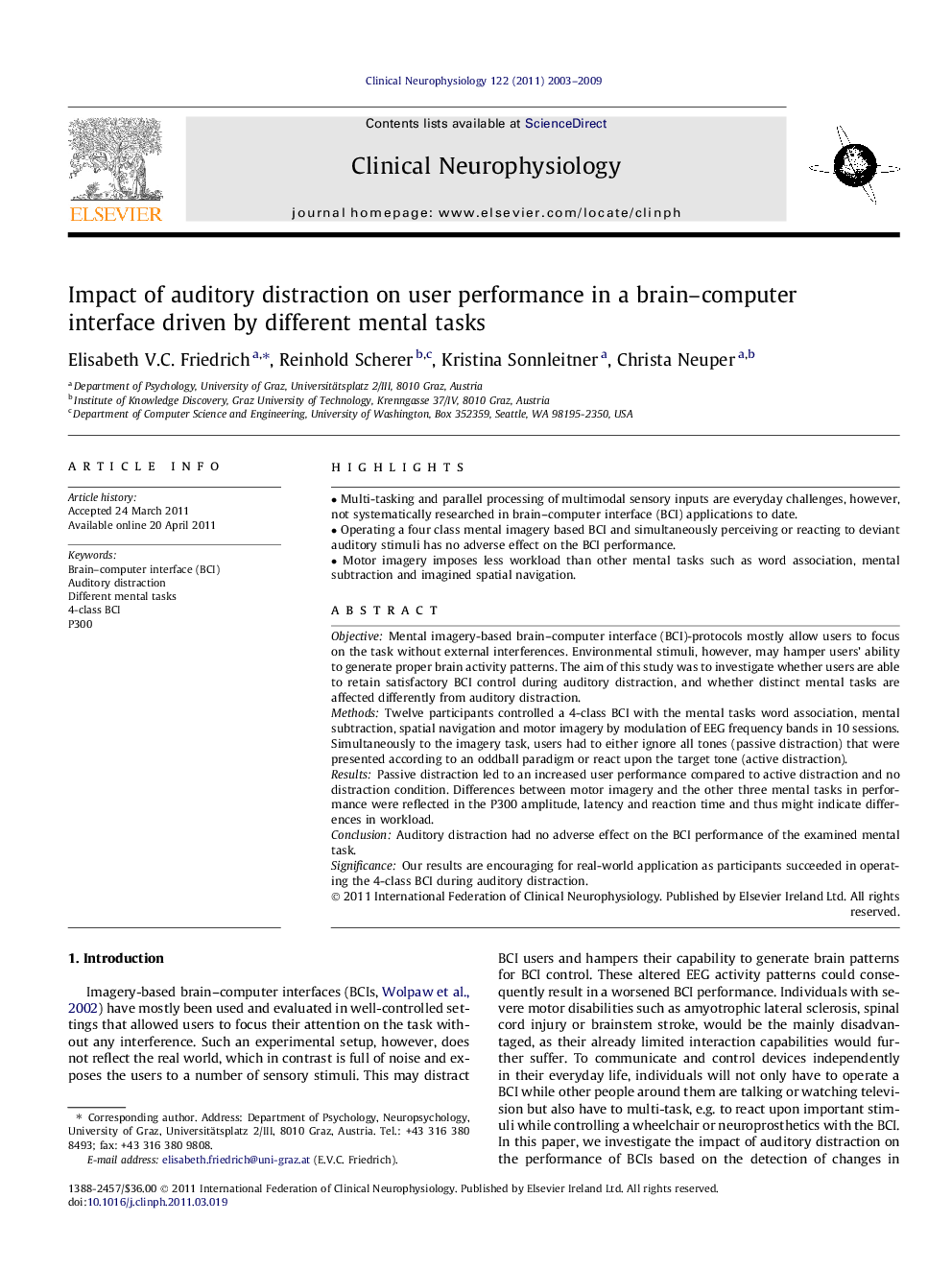| Article ID | Journal | Published Year | Pages | File Type |
|---|---|---|---|---|
| 3045720 | Clinical Neurophysiology | 2009 | 7 Pages |
ObjectiveMental imagery-based brain–computer interface (BCI)-protocols mostly allow users to focus on the task without external interferences. Environmental stimuli, however, may hamper users’ ability to generate proper brain activity patterns. The aim of this study was to investigate whether users are able to retain satisfactory BCI control during auditory distraction, and whether distinct mental tasks are affected differently from auditory distraction.MethodsTwelve participants controlled a 4-class BCI with the mental tasks word association, mental subtraction, spatial navigation and motor imagery by modulation of EEG frequency bands in 10 sessions. Simultaneously to the imagery task, users had to either ignore all tones (passive distraction) that were presented according to an oddball paradigm or react upon the target tone (active distraction).ResultsPassive distraction led to an increased user performance compared to active distraction and no distraction condition. Differences between motor imagery and the other three mental tasks in performance were reflected in the P300 amplitude, latency and reaction time and thus might indicate differences in workload.ConclusionAuditory distraction had no adverse effect on the BCI performance of the examined mental task.SignificanceOur results are encouraging for real-world application as participants succeeded in operating the 4-class BCI during auditory distraction.
